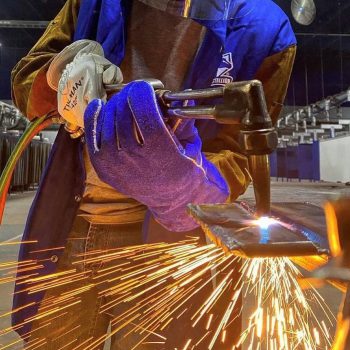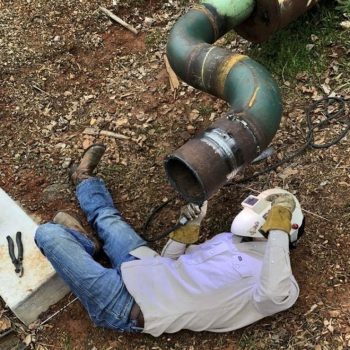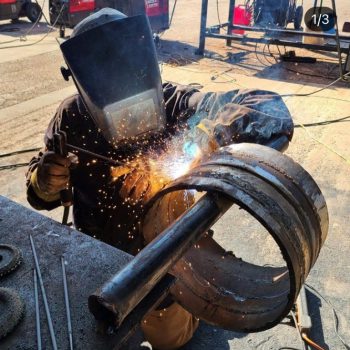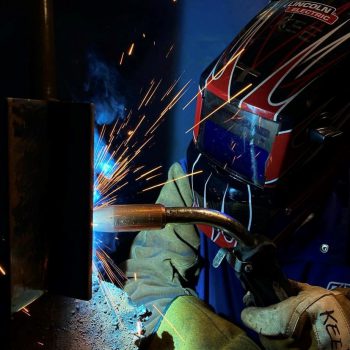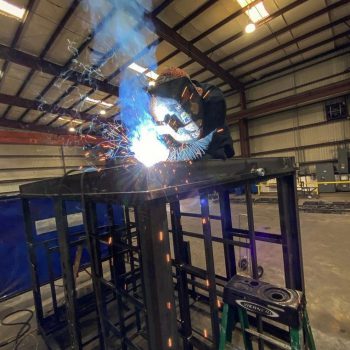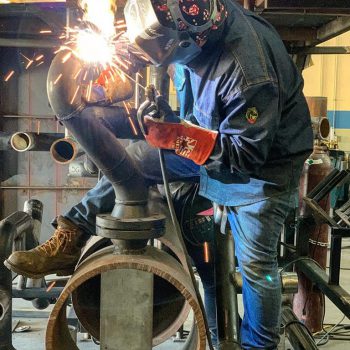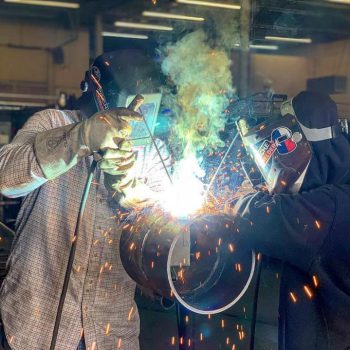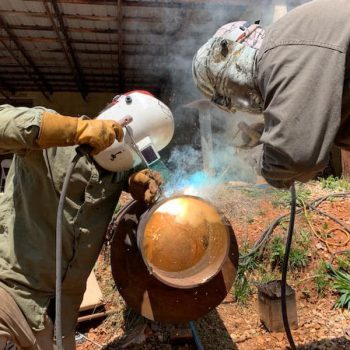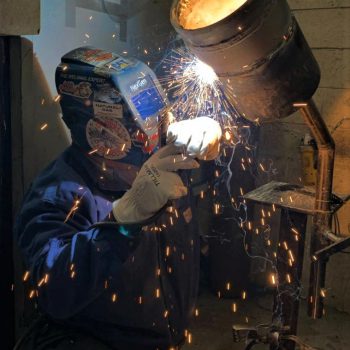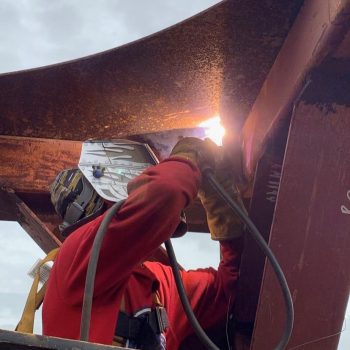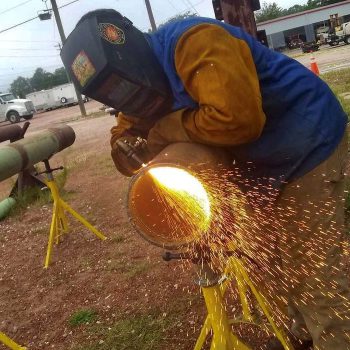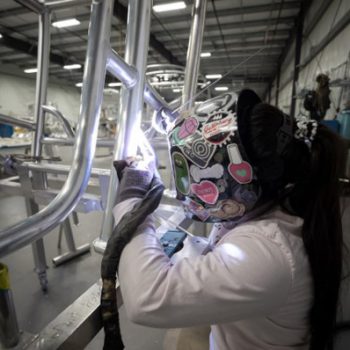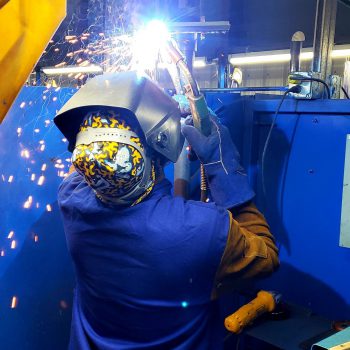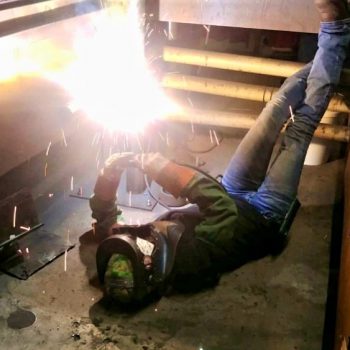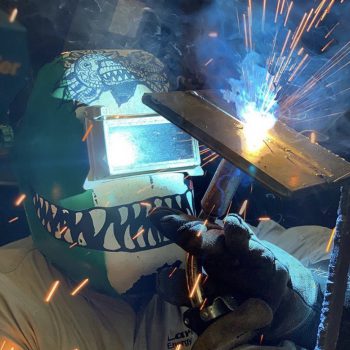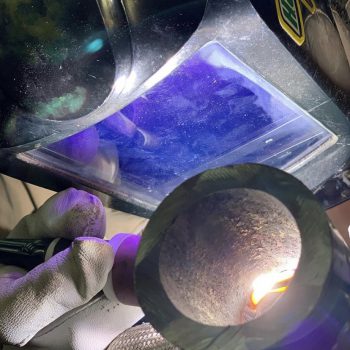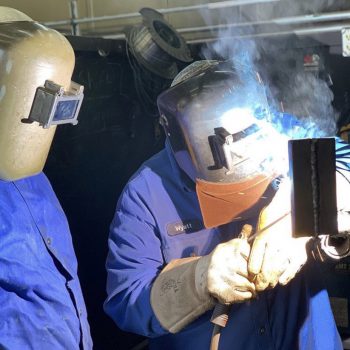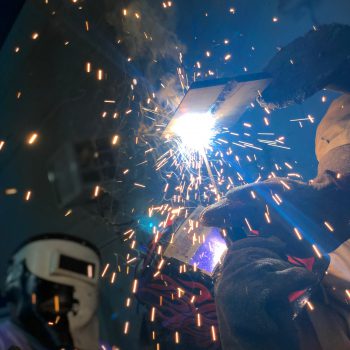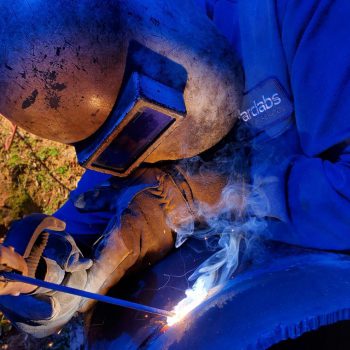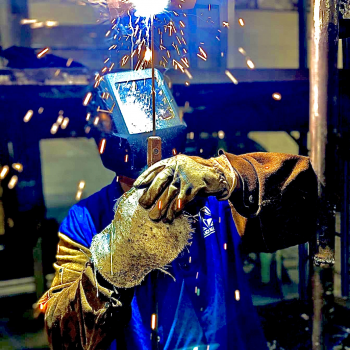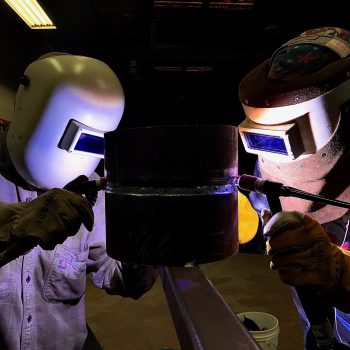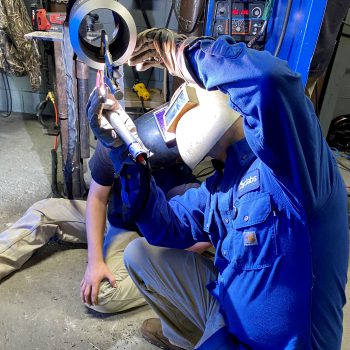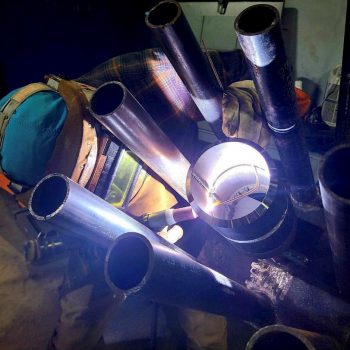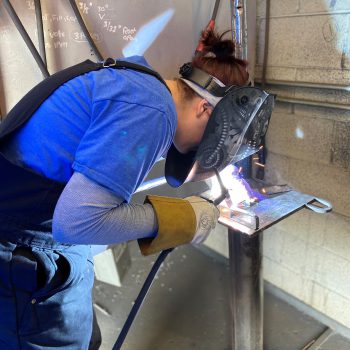In the Hot Seat with Tyler Sutton
In the Hot Seat – 10 Questions with Tyler Sutton, Arclabs Welding Instructor
Name: Tyler Sutton
Title: Welding Instructor, Arclabs Welding School
Location: Houston Campus, Texas
Years Welding: 10
“We’re family here, it’s that simple. I speak for everyone when I say we all have each other’s back. If one of us goes into a fire, we all go into a fire.”
— Tyler Sutton, Welding Instructor
1. Welding Experience
• Stick: “I started rig welding; it was 99.99% Stick – everything from waterline pipes to oil field. I got to weld in several different states.”
• MIG: “I went and worked for a company doing ornamental-style fabrication for gates, stair railings and fences in million-dollar homes around Houston.
• TIG: The ornamental company was mostly MIG welding, but that’s where my TIG aluminum experience started coming into play. They taught me how to do it. I wasn’t confident at first, but after working with it for a few weeks, I gained confidence quickly.”
• Flux-Cored: “I graduated high school and went to work for a family friend that has a welding company here in the Houston area. And he specializes in building pressure vessels, skids and some other different things. We’d take a lot of rolled plate, roll it into pipe and weld it out using flux cored.”
2. Your Start Welding
“I started in high school. I took a welding class just because I had to take something as an elective. Everything about welding, the flame, the molten metal, attracted me to it. I’ve always been a very hands-on person. I like building things and working with my hands in general. I’m not an office guy.”
3. Learning New Skills
“At the pressure vessel company, Texas Plate Fabricators, I started off as low man on the totem pole, doing some of the ‘nitty gritty’ stuff before working my way up to welding ASME pressure vessels and boilers. My first certification when I was about 18 or 19.”
“When my students don’t need anything, I pick something up and weld it. I do this to keep my skills fresh and finely tuned so that I can teach better. Students ask me how I can weld something so easily, and I tell them it takes practice. I tell them not to try to be like me, but be better than me. You’re never going to progress if you’re not willing to learn new things.”
4. Hard Work
“My pipe welding experience took me to several states. I tell my students that you really can’t prepare for how hard and long you work. I was used to 60-hr. weeks, and this was more like 96-hr. weeks. The good money is there, but to chase it, you must be willing to sacrifice.”
“When you come to school, start with the most important thing – your work ethic. You need to want this for yourself. I tell my students to dream big but make your dreams within reach. Then when you go after them, never settle for mediocrity and never get outworked.”
“Instructors here work hard because our students are not numbers or paychecks. We give them the best that we have to offer so they can have a great career. Our success is a direct reflection of our students’ success.”
5. The Experienced Welder Goes to School
“After being on the road pipe welding, I took classes at Arclabs. I knew I didn’t know everything, so I went to school to get professional instruction. An instructor there, Wyatt, opened my eyes to all the things I needed to learn, like how to back feed a TIG wire and how to listen to a weld to hear if it was running too hot or too cold. It opened my welding world and helped me realize what I was capable of compared to a ‘set the machine and go’ mentality.”
“After graduation, I went back to pipe welding for shipyards in the Houston area. Wyatt called me about a year later and asked if I’d consider being an instructor. I’ve never had a job that was 40 hours a week. I was about to get married, and a job that gave me a chance to spend time with my wife sounded good.”
6. A Favorite Student Story
“We had a Marine veteran who had his school paid for because of his service. He’d give you the shirt off his back. He signed up for a 1300-hr. program – that’s roughly a nine-month program – and completed it in less than five months.
“If I gave him something, he’d try it, and do it perfectly. We threw everything at him to see if we could stump him, and he took them all like a champion. He thrived throughout the program and went to work for a performance car company. He showed them the same work ethic.”
7. Second Chances
“Our instructors care because we all know what it takes to make it in the real world. You don’t know someone’s backstory or what brought them here. I had a young lady who was living in a shelter with her kid, but she was a go-getter. When students like her come back and get a smile on their face talking about their careers, that’s our reward. We change people’s lives by giving them the tools to change themselves.”
8. Life as an Instructor
“When you see students progressing and they’re getting towards the end of their program, it’s kind of like baby birds. They’ve grown their wings and they’re ready to fly off. They don’t become as dependent on you. But about the time they’re getting ready to hit the road, we get a new group of students in, and then it’s all hands on deck.”
9. What Would Surprise Your Students?
I’m serious and straight to the point. I’m a big guy with a huge beard. I look intimidating, but the face doesn’t really represent who my personality is. I have a soft side for those students that need help, so I get called a big teddy bear.
10. Certifications and More
ASME B31.1 Power Piping
ASME B31.2 Fuel Gas Piping
ASME B31.3 Process Piping
ASME B31.4 Liquid Transportation of Hydrocarbons, LP Gas, Anhydrous Ammonia, and Alcohol
ASME Section IX
AWS D1.1 Structural
AWS D1.2 Aluminum
AWS D1.3 Sheetmetal
AWS D1.4 Reinforcing Steel
AWS D1.5 Bridge welding
AWS D1.8 Seismic supplement to AWS D1.1
AWS D1.9 Titanium structural
AWS D18.1 Hygienic Stainless Steel
Welding experience on ferrous and non-ferrous alloys are as follows but not limited to….
Carbon Steels A36
Stainless Steels, 200, 300, and 400 series
Duplex 2491
Super Duplex 2596
Chromes Steels P9, P11, and P22
Aluminum 4043, 5356, and 6061
Copper
Molybdenum
Nickel Alloys Monel, Inconel, and Hastelloy
Low Alloy 20
Waspaloy
Titanium HI and Low grade
Platinum
More on our instructors
[wpu_silo links=’35’]
 877-647-4111
877-647-4111
